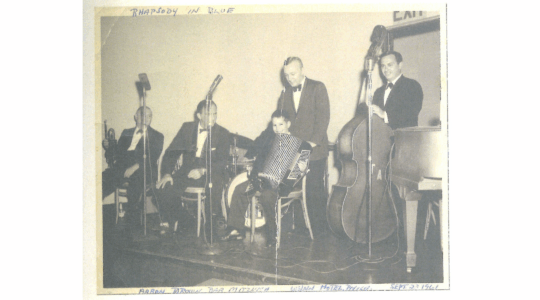NEW YORK (JTA) — The cancellation last week of a major Jewish educational conference is the latest sign that the Jewish nonprofit world will shrink in coming months as some organizations move closer to extinction and others seek mergers.
Over the past year, the faltering economy and tight fund-raising dollars have forced several Jewish institutions to cede their independence and fold into larger organizations. Recent months have seen an open push for Jewish institutions to consider how they can work together to streamline an organizational world that apparently has become too robust to fund.
But the announcement last week that the Coalition for the Advancement of Jewish Education was canceling its annual conference and seeking ways to fold its programming into another existing Jewish organization could serve as a wake-up call that more such moves are on the way.
“In some ways, the CAJE closure is a big flashing red light of warning to other Jewish not-for-profits who should be looking for combination because if you wait too long, there may be nothing left to combine,” Jeffrey Solomon, the president of the Andrea and Charles Bronfman Foundation, told JTA.
The Jewish nonprofit world went through a dramatic change over the past two decades, moving away from a model that was funded primarily by a centralized Jewish federation system to more of a free-market system that was funded increasingly in large part by private philanthropists working on their own accord.
While that free-market system allowed for intense innovation and growth, it also created several layers of fat and overlap that could have been streamlined along the way — but must be trimmed now, according to Jonathan Sarna, the Joseph H. & Belle R. Braun professor of American Jewish at Brandeis University and the author of “American Judaism.”
“Hard times will promote consolidation,” Sarna said. “Initially there will be great sorrow at the loss of this organization or that organization, but if we do it right, we will find that we are leaner and meaner.
“We will see significant efficiencies produced by this kind of downsizing. Though no one is unsympathetic to the people losing their jobs who have also done important work, when looked at from the Jewish community as a whole, there is a sense that we expanded a bit too rapidly and far too many organizations came into existence.”
This expansion bubble already has started to deflate, as some organizations have cut pre-emptively to make sure that despite any fund-raising woes, at least their core mission would be carried out.
The Baltimore Hebrew University announced that it would become part of Towson State University, and the Philadelphia Jewish Archive Center said it would shut down in 2009 and its collection would become part of Temple University’s archive.
But the closing of CAJE, Sarna said, is perhaps the perfect example of what happens when an organization runs its course and does not adapt quickly enough.
When it was started some 35 years ago, CAJE essentially was a platform for young innovative Jewish educators to share what then were avant-garde ideas about Jewish education that were being given short shrift by the establishment.
As CAJE aged, Sarna said, it went from a cutting-edge innovator to more of an establishment organization in the world of supplementary Hebrew schools. Meanwhile, a new crop of effective, innovative organizations emerged that included, among others, the Partnership for Jewish Education and RAVSAK: The Jewish Community Day School Network, as well as a resurgent Jewish Educational Services of North America.
“You can keep that going in good economic times,” Sarna said of the overabundance of Jewish educational organizations. “But once bad economic times hit, it is clear that we are going to see a consolidation in the world of Jewish education. With JESNA and PEJE so much better funded, it is not surprising that CAJE has to shut its doors. And it would be a mistake to say, ‘What a terrible setback for Jewish education.’ ”
The call for more mergers in the broader Jewish nonprofit world has become louder of late.
Presenters at a symposium on nonprofits and the economy sponsored by the Samuel Bronfman Foundation and Natan, an organization that helps young funders find innovative projects, encouraged those in attendance to consider whether their organizations could merge.
When the Jewish Funders Network met in December to discuss how to deal with the fallout from the huge losses taken by nonprofits in the Bernard Madoff scandal, it proposed coming up with a list of organizations open to merger to save the community money.
And when the Orthodox Union convened the leaders of dozens of Jewish day schools, organizers pushed schools to consider how they could potentially consolidate parts of their course offerings, perhaps creating regional Advanced Placement courses run by several schools together instead of each school paying to run small classes on their own.
Most Jewish professionals and funders are loath now to publicly name organizations that they think should merge, but the American Jewish Congress is an easy example of a potential casualty of the financial crisis, those interviewed told JTA.
The AJCongress, which lost $21 million of its $24 million endowment in Madoff’s Ponzi scheme, has long been discussed as an organization whose mission — defending civil rights and advocacy for Jewish social causes — overlaps with several other organizations, including the larger, better funded and similarly named American Jewish Committee. AJCongress, which did not respond to requests for comment, had been relying on its endowment to produce about 25 percent of its annual operating budget.
“Rather than organizations scrambling for resources and competing for dollars, they should come together and say, ‘How do we work together?’ ” Simon Greer, the CEO and president of Jewish Funds for Justice, told JTA.
Greer’s organization is actually the combination of three organizations that have come together since 2006: the Shefa Fund, Jewish Fund for Justice and Spark. And Greer said that he has had discussions with at least a half dozen other organizations since November about possibly working strategically together.
The money squeeze is real, according to Dana Raucher, the executive director of the Samuel Bronfman Foundation, the philanthropy of billionaire Edgar Bronfman.
Raucher says December typically is a slow month in terms of organizations asking for money because their fiscal years are already over. This December, though, she took two or three meetings per day from perspective grantees.
“I am definitely sensing that we are turning the page, and the Jewish philanthropic universe is getting smaller,” Raucher said. “It is a smaller world now.”
But, Raucher says, mergers are not the cure-all solution and are, in fact, quite difficult to pull off — and can only be successful when the cultures of two organizations align.
“The for-profit experience teaches us that mergers are mixed bag,” she said. “Seventy percent of for-profit mergers destroy share value. I think the mergers that work best are when one organization is so big it’s a buyout situation. That doesn’t tell you that you shouldn’t merge, but you should walk into it carefully, pilot something.”
The Jewish community should look at this as an opportunity, albeit a painful one, according to the head of Natan, Felicia Herman.
“The financial crisis is a reversal in the way that we have been living for the past 20 to 25 years,” she said. “That was based largely on fiction, a bubble of a lot of debt and credit. Now that that has gone away, there is an opportunity to restructure everything.
“We should not take for granted that what we have known in the past is what we will know in the future, whether it is in terms of particular organizations going away or a particular way of organizing the community,” she said. “I think that right now we are in a moment where many things are possible, and just saying that out loud is important.”
JTA has documented Jewish history in real-time for over a century. Keep our journalism strong by joining us in supporting independent, award-winning reporting.





